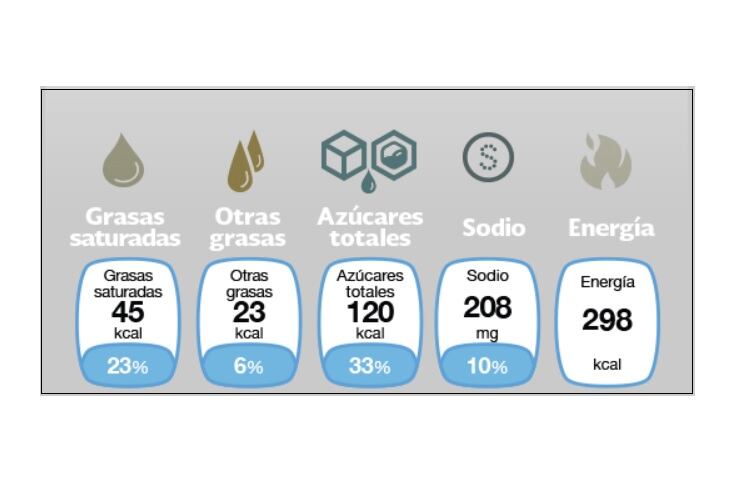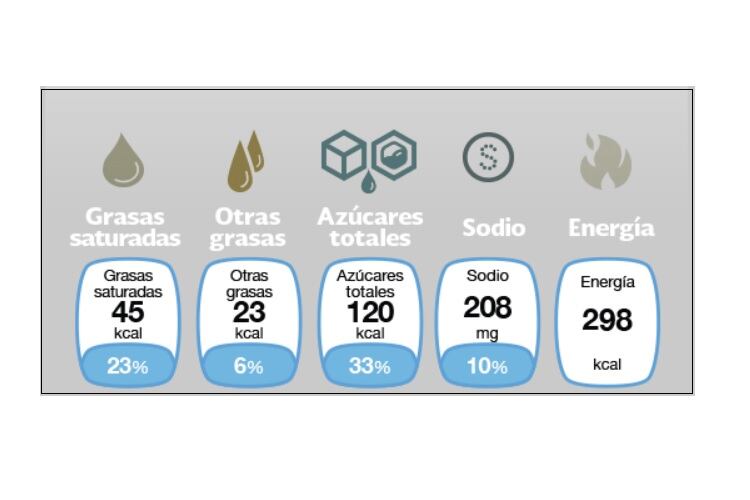Academics and experts of the National Institute of Public Health (INSP), a body that advises the Mexican government on public health policy, has called for the country's front-of-pack nutrition label to be removed and replaced by warning labels, such as those used in Chile and Peru.
Mexico currently uses the System of Frontal Labeling of Food and Beverages (SEFAB), introduced in 2015 as part of wider national policies on Food Health and Prevention and Control of Overweight, Obesity, and Diabetes.
According to INSP, however, SEFAB does not fulfill its purpose, and it is calling on the government to adopt an easy-to-understand front of pack label based on international dietary guidelines, such as those of the World Health Organization (WHO).
“Studies that have been formulated since 2011 have corroborated that the current system is deficient, incomprehensible to the Mexican population and, in the face of the pandemic of obesity, overweight, and diabetes that lives in the country, should be changed.”
The Mexican government declared obesity to be a national epidemic in 2016.
INSP said it wanted to make clear its position in anticipation of a Supreme Court of Justice decision, expected in the coming days, on a complaint about Mexico’s current labeling system. The complaint was filed by consumer rights organization El Poder del Consumidor several years ago.
Confusing calculations and arbitrary portion sizes
The INSP experts criticized the use of "arbitrary" portion sizes, which prevent individuals from comparing the healthiness of different products in the same category and allow manufacturers to achieve a more favorable guideline daily amount (GDA) profile than other labeling systems would allow.
Meanwhile, some food products that are specifically aimed at children or could be consumed by children calculate their GDA label on the dietary reference values for adults, for instance, which leads to excessive consumption of critical nutrients such as added sugar, said INSP.
Interpreting the information presented in the GDA format to understand a product’s healthiness also requires consumers to do confusing mathematical operations, it said.
Undergraduate nutrition students struggle to understand SEFAB
In order to highlight the SEFAB's confusing nature, the Institute asked 122 university nutrition students aged between 17 and 31 to complete a 23-point questionnaire about understanding certain aspects of the label.
They found that only 12.5% were able to correctly answer the questions while some students took six minutes to do so.
The average time it took students to answer three questions to determine the energy content, sugar content and the number of products they could consume to hit the maximum sugar level recommended in the GDA labeling was 3.34 minutes.
The INSP slammed this as “an excessive amount of time” especially given that consumers – in a country where an estimated 10% are illiterate - do not have the same understanding as nutrition students.
The conclusions also drew on a 2016 Midway National Health and Nutrition Survey that showed that 97.6% of the population survey did not know how many calories a child between 10 and 12 years old should consume.
“The front labeling of food is a tool that should serve so that the largest number of Mexicans regardless of their socio-economic status or educational level can make healthier choices in a short time. This is one of the most valuable strategies to improve nutrition and reduce the great economic burden and health that obesity, diabetes and other diseases related to the consumption of unhealthy foods represent.
“The current GDA labeling does not fulfill this purpose, so it must be replaced by a warning [system] in line with the developed evidence, the recommendations of national and international experts, as well as the Pan American Health Organization.”
ConMéxico supports SEFAB
Mexico's food manufacturers are not in favor of changing the national nutrition label.
Laura Miranda, nutrition advisor at trade association ConMéxico, told this publication previously that changes to front-of-pack labeling in Mexico were “not necessary”.
The current system was transparent enough and, importantly, had only been rolled out across all food and non-alcoholic beverages in the country since 2016, she said.
“With a policy as young as this one, it is unrealistic to determine its success or failure,” she said. “...With only two years of implementation, it is unreal to grade any regulation, especially those that imply modification in population habits.”



